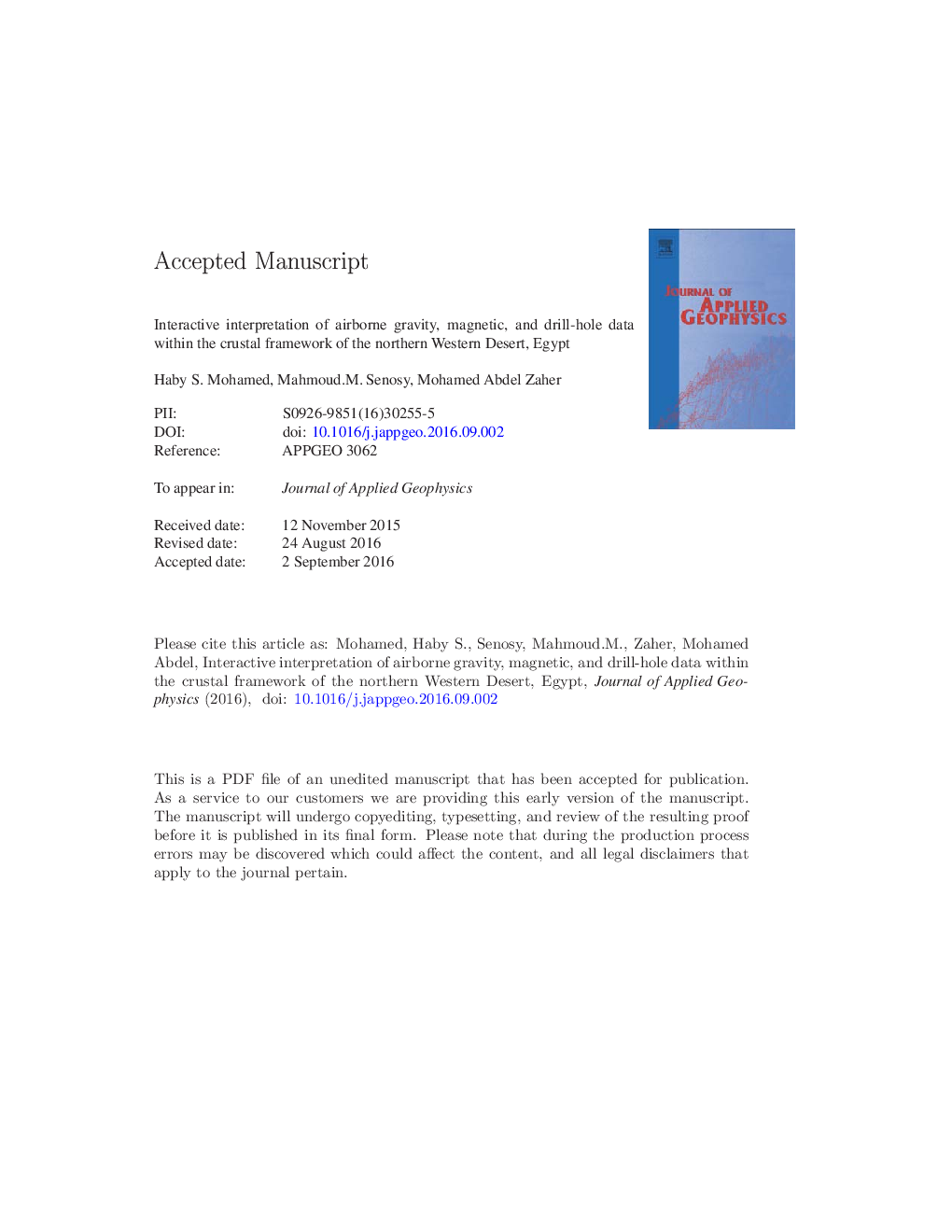| Article ID | Journal | Published Year | Pages | File Type |
|---|---|---|---|---|
| 6447026 | Journal of Applied Geophysics | 2016 | 44 Pages |
Abstract
The northern part of Western Desert represents the second most important oil-producing and gas provinces in Egypt. The aim of the present study is to highlight the subsurface structures, tectonic framework, and variation of the crust and upper mantle of the northern Western Desert. Geophysical data in the form of airborne gravity and magnetic maps as well as drill-hole data were used to achieve the objectives of the study. 2D interactive sequential modeling of aerogravity and aeromagnetic data was done along some selected profiles with constraints of the existing deep drill-holes at the study area. From these models, three maps for the depths to Precambrian basement, Conrad, and Moho surfaces were constructed. The results of this study indicate that the depth to the basement surface (thickness of the sedimentary section) ranges between 900 m at the southern parts and more than 5500 m at the northern parts. Meanwhile, the depth of Conrad discontinuity which reflect thickness of the upper crust; varies approximately between 10,000 m at the central and northern parts and 17,000 m at the southern parts of the area. While the Moho depth which represents the crustal thickness ranges from 27,000 m at the northern parts to 39,000 m southward. Integrating the results shows that the main compressive stress which influenced the studied area is in N55°W direction that supposed to cause primary shear in N25°W and N85°W directions with right and left lateral movements, respectively.
Related Topics
Physical Sciences and Engineering
Earth and Planetary Sciences
Geophysics
Authors
Haby S. Mohamed, Mahmoud.M. Senosy, Mohamed Abdel Zaher,
